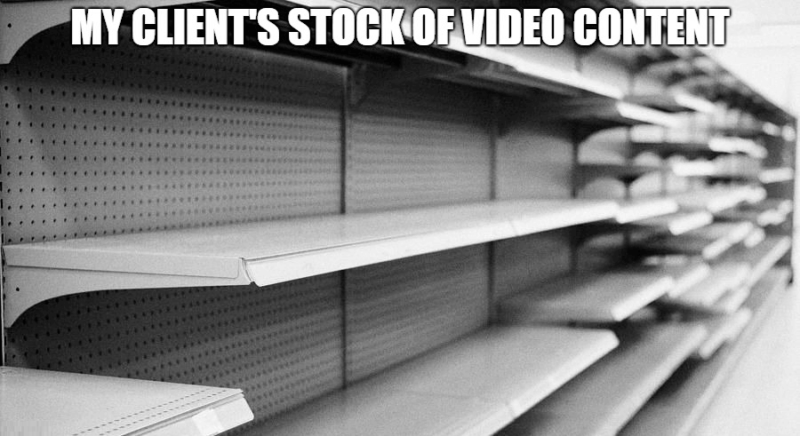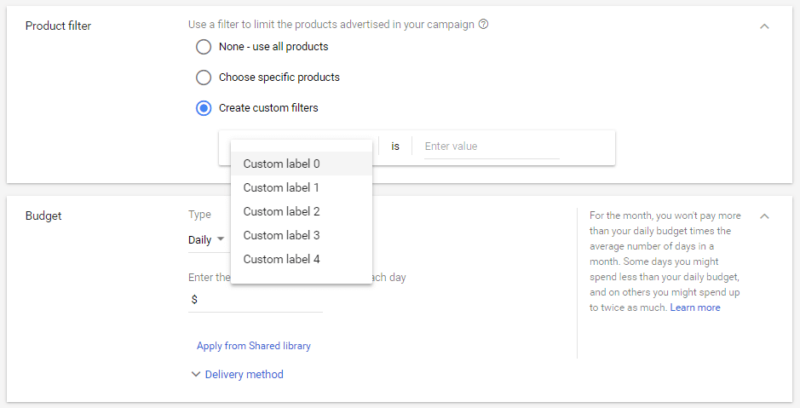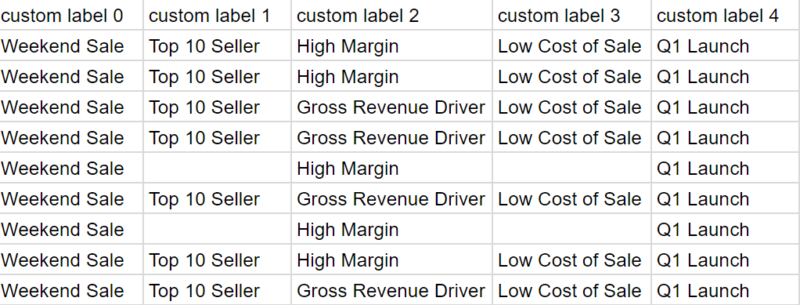TrueView for Shopping: The perfect marriage of awareness and direct response
To get the most out of a single video for a campaign, pair it up with a custom label that constantly refreshes and excludes the proper audiences.
If someone asked me today which campaign type is the perfect marriage of brand awareness and direct return, my answer would be TrueView for Shopping campaigns without hesitation. I can showcase my products both while my video ad is running and even after the ad is completed or skipped. The goal here is to encourage viewers to consider my brand or my products in the future. Not only can I boost my product awareness, I can also potentially get viewers to buy my products right off of my video ads no matter where they may be in the buyer’s funnel. So why do I get a lot of pushback from clients to get on board to try TrueView for Shopping campaigns? Let me explain why I get the pushback, but also one solution to the roadblock.
The typical problem many marketers deal with
What I hear the most from my clients when I recommend video campaigns to them is, “We just don’t have the budget to constantly test new videos.” It is not the ideal response, and I want to fight against this argument all the time, but I understand where they are coming from. So many businesses I deal with think you need a massive budget to get quality video content. That’s not always the case.

You don’t need an enterprise-level budget to run video campaigns. You can still create a video campaign that consistently reaches new users and showcases different products. And while I will always encourage getting more video content as the first option, I’m going to use the rest of this post to show you how you can set up an evergreen TrueView for Shopping campaign if you only have one video.
Understanding how we can select products
First and foremost, products for TrueView for Shopping campaigns are selected at the campaign level. When selecting products, advertisers have three main options. The first option is to use all products. The second option is to manually select up to ten products (but only six will show at a time). The final option, and the one we want to use is to create custom filters for your product selection. Since the new Google Ads interface went live earlier this year, the only option we have with creating custom filters is to use your custom labels.
The custom label options are pulling from the custom labels you are using within your Merchant Center feeds. Are you using custom labels for your shopping campaigns? You are? Good! But what kind of labels are you using? Custom labels that categorize the products are fine, but I love custom labels that call out the most valuable products depending on what my goals are. Here’s an example:
In the image above there are a variety of labels, but for the sake of this post let’s just focus on custom label 1. In this particular column, we’re labeling certain products in a top ten seller list. If we’re maintaining our feeds properly, and assuming your top ten products change regularly, we now have a custom label that will refresh itself pretty often.
Let’s recap where we are so far. First, we have only one video to use as an ad on YouTube. In the video campaign settings, the product filter is a custom label that will automatically update products on a consistent basis. Time to add the final component to the campaigns before launch.
Adding audience exclusions
If we are planning on showing one video for a more extended period, we need to do the best we can not to annoy the same user. I hate seeing the same TV commercial twice in the same day. What makes you think potential customers are going to want to see your YouTube ad over and over again for months? Let’s start excluding some users.
The exclusions you should add to campaigns are going to vary for each account, but here are some options to consider:
- Past, recent converters. If you’re showing the same video to viewers no matter what level of the funnel they are, you’ll probably want to exclude all conversions and not just transaction conversions. If a viewer just saw your ad and just converted, leave them alone for a bit.
- Custom match. If you have a large enough list of users who recently bought something, this could be the easier route to block them from seeing your ads again.
- Previous viewers of this exact ad. If your goal is to reach only new users with the TrueView for Shopping campaign, block out all users who saw the ad already. You can easily create this audience in the Audience Manager in Google Ads. First, start building a YouTube users audience. Then choose the exact video you are promoting as an ad to finish the audience.
By excluding specific audiences, we’re making sure people who may have recently interacted with the brand aren’t getting bombarded with the same ad. I’m trying to make sure my single-video ad campaign is showing up to as many new, relevant users as possible. This will help me stretch out the length of my TrueView for Shopping campaign to get as much worth as possible before I have to go back to my client for a new video.
Final point
I need to clarify one more time, I do not recommend using one video for a longer period. We should be testing out video creative just as we do with any other advertising campaign in digital marketing. But sometimes there may not be a massive budget or getting creative from the boss or client can take forever. If you want to get the most out of one video for a TrueView for Shopping campaign, pair the video up with a custom label that constantly refreshes the product and excludes the proper audiences. This way your campaign will routinely show new products to a variety of new users. So if you’re a PPC marketer working on a low-budget e-commerce account, you now have no more excuses to why you can’t run a video campaign!
Contributing authors are invited to create content for Search Engine Land and are chosen for their expertise and contribution to the search community. Our contributors work under the oversight of the editorial staff and contributions are checked for quality and relevance to our readers. The opinions they express are their own.
Related stories


